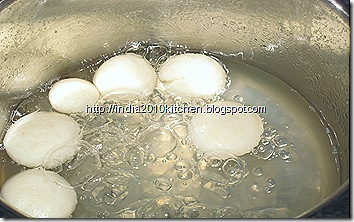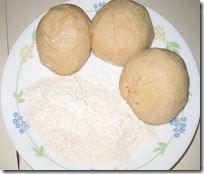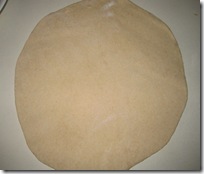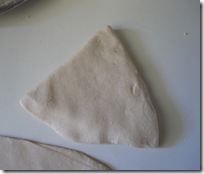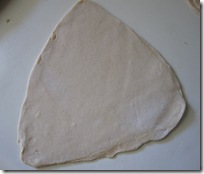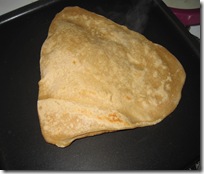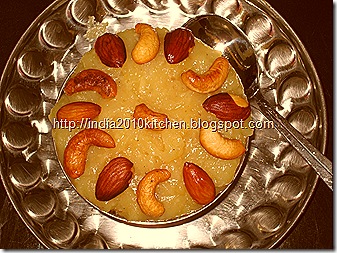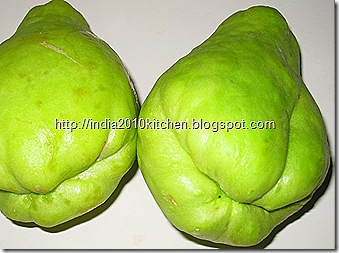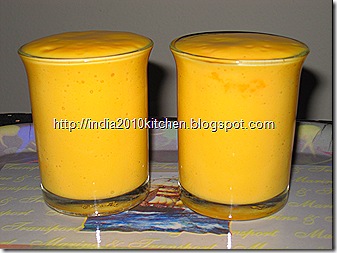A quick and easy South Indian breakfast is upma. It's a must breakfast at least once a week in every household. When you are in a hurry or if a large number of guests come to your house without a notice , upma is the only recipe which can please all. In most of the South Indian marriages upma is a must breakfast. Upma is made either with sooji(semolina), cracked wheat, vermicelli or rice rava. No matter with what rava it is prepared, it is certainly nutritious. Now and then I also make bread upma and poha upma.
Upma served with chutney or sambar tastes yummy. Here I present a chutney made with peanuts and onions. This tastes awesome. This can be tried for a different taste and when you are bored up with the coconut chutney.
UPMA
INGREDIENTS
- Sooji(upma rava/semolina) 1 cup
- Vegetables 1/2 cup (onions,potatoes,carrots, greenpeas, tomatoes)
- Water 2 cups
- Oil 5 Tsp
- Salt to taste
- Ginger 1/2 inch
- Green chilies 2
- Cinnamon 1 inch
- Curry leaves a few
- Turmeric a pinch
- Ghee 2 Tsp
- Chana dal, urad dal, mustard seeds 1 tsp each
PROCEDURE
Cut the vegetables into small pieces. Chop the ginger and green chilies. Heat oil in a pan and add the chana dal, urad dal, mustard seeds. when the mustard seeds splutter and the dal turn golden brown add the cinnamon, ginger, green chilies, curry leaves,vegetables. Add the salt and when the vegetables are half cooked add the water. When the water comes to a boil slowly add the rava into the water with constant stirring. See that no lumps are formed. Keep on stirring till all the water is absorbed by the rava. Now reduce the flame and cover the upma with a lid and let it cook with its own steam for about 3 minutes. Finally add the ghee and mix well. Serve after 10 minutes to get the right taste.
TIPS
- If you are a beginner to cooking, roast the rava in a spoonful of oil and then add this to the water so that no lumps are formed.
- Shredded cabbage can also be added to the vegetables.
- Skip all the vegetables and add a quarter cup of cashew nuts to make cashew nut upma(jeedipappu upma). This is a Andhra special upma. In this version do not add the turmeric and cinnamon.
- For making upma with cracked wheat ( godhuma rava) or rice rava (biyyapu rava) add 3cups water to 1 cup of rava.
CHUTNEY
INGREDIENTS
- Peanuts/groundnuts 1/2 cup
- Onions 1 medium (chopped)
- Green chilies 3-4
- Salt to taste
- Tamarind small piece
- Oil 2 Tsp
- Channa dal,urad dal 1 tsp each
- Mustard seeds 1/2 tsp
- Red chilly 1
- Water enough to make paste
PROCEDURE
Add a table spoon of oil in a pan. When oil is heated roast the onions, peanuts and slit green chilies. The onions need not turn brown but must become transparent and the raw flavor must be removed. The peanuts must be fully roasted. In a blender add the onions , peanuts, salt ,tamarind, green chilies and make the chutney. In a small pan add the oil and heat it. Add the dals, mustard seeds,red chilies and when done add the tadka to the chutney.
Enjoy the upma with the chutney and a spoonful of ghee on the top.
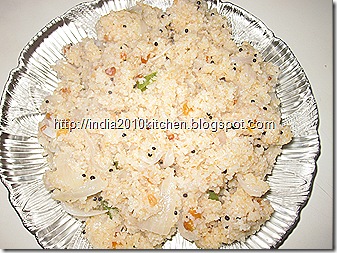 One of the healthy and easily digestible breakfast is cracked wheat upma. This is very healthy and good recipe for elderly people and diabetic patients. This is very simple to make and can form a good dinner for lazy evening.
One of the healthy and easily digestible breakfast is cracked wheat upma. This is very healthy and good recipe for elderly people and diabetic patients. This is very simple to make and can form a good dinner for lazy evening. 